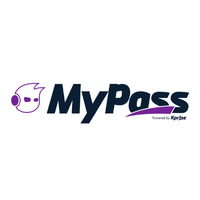LMS: A Crucial Tool For Any Organization
Today, a Learning Management System (LMS) is an essential tool in the growth of any organization. An LMS is not merely a tool for learning but is symbolic of a culture that encourages and supports learning in an organization. It is a proven way of enhancing work culture through mutual growth and development. Therefore, it becomes important that the LMS is used regularly and effectively utilized by the members of your organization. The bad news is that it can seem like an endless road. The good news is that with just a few cool tricks up your sleeve, you can achieve this quickly and in an uncomplicated way.
Ensure Seamless And Empathetic Communication
Acceptance of your new LMS within your team largely depends on how well it is communicated. Many a time, organizations issue orders to use new systems without any accompanying communication for potential users. This can seem like a forced change. To avoid this, you can start communicating with your users from Day 1.
- Announce the implementation of the new LMS at the earliest.
- Involve informal communication channels in the process like social media or informal conversations instead of relying solely on email for exchanging news and information.
- Talk about the LMS at every stage of its integration. From announcing that you will soon be building one to communicating the progress of its development and then involving your team during the implementation stages, it is important to make everyone feel like they are a part of the process.
- Encourage and establish open lines of communication about the LMS so that your people can be upfront about their queries and concerns.
Now, while it is important to go through the right channels, it is equally important to ensure that the right information has been communicated.
- Clarify who the LMS is for— your employees, clients, customers, or outsourced teams.
- Set goals for the introduction and the implementation of the LMS in your organization and share them with everyone. If the users don’t know what is expected out of them, chances are that they wouldn’t be able to keep up.
- Explain how the new LMS would affect them at an individual level. LMS is not like other technologies implemented in organizations. It benefits the organization as a whole and profoundly affects the work culture. It is important that the users of the system are aware of this.
- Share a step-by-step plan so that users know what to expect. You may also include training and feedback processes in the plan to smoothen the experience.
Create The Right Content
The right content can make or break your LMS. It makes all the difference between an obligatory process and an exciting prospect at work. Encourage your content creators to be innovative and purposeful in their approach and enhance the quality of the content by breaking it down into small, consumable parts. Bite-sized pieces of content like quizzes, images, etc., are very well received.
Change The Culture, Not Just The System
When we say change, we don’t mean big ones. Your LMS is one tool that can tremendously benefit from your organization's culture. It is important to establish that your organization values learning above all and that it is one of the key pillars of your work culture. Seek new knowledge, share it with your team and apply it at work to foster a culture of learning. Make sure that it is not just limited to a certain part of your organization. Get the management actively involved in the process as well.
Another great way to encourage effective learning is to incentivize it. Offer recognition to those who make the most of the LMS. Manager and peer recognition can go a long way in boosting the users’ enthusiasm. Don’t restrict learning to roles and job descriptions. It is important that your organization views learning as fun and not just up-skilling for better performance.
Make The LMS Work For You
Now that you know how to actively involve users in your new LMS, it’s time to ensure that you use it to its best potential. Firstly, remember that you will not notice the benefits if you do not track them. So it is important to identify and track KPIs (Key Performance Indicators) of your LMS. It could be as simple as the number of people taking the courses, or the number of courses completed during a certain period. This will help you understand the effectiveness of the system. Make sure to allow and encourage a robust feedback mechanism so that you can constantly improve the performance of your LMS and make it more accessible.
At the end of the day, any technology can be of immense value to your organization as long as every member of the organization is involved in the entire process. An LMS is no different in that way. Further, it offers several long-term benefits in terms of employee or client satisfaction, retention, and overall team performance.


